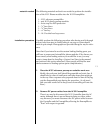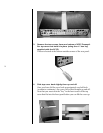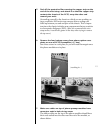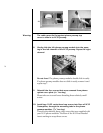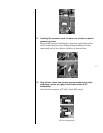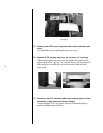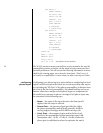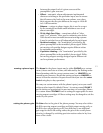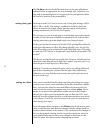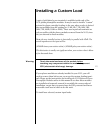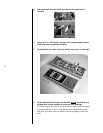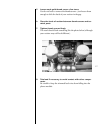
21
between the output level of a given source and the
preamplifier’s gain structure.
• Offset— automatic volume adjustments implemented
whenever switching to this particular input, used to ensure
that all sources play back at the same volume, even when
their outputs may be quite different; the range is ±20.0 dB
in 0.1 dB increments.
• Balance— unique to phono inputs, this is used to correct
for the seemingly inevitable small imbalances seen in all
almost cartridges.
• 20 Hz High Pass Filter— sometimes called an “infra-
sonic” or a “subsonic” filter; used to minimize noise below
20Hz found in most turntable/tonearm/cartridge systems.
It may be switched on or off independently for each input.
• Resistive Loading— the “termination” provided by the
phono preamplifier to the turntable’s phono signal. Differ-
ent moving coil cartridge designs require different values
for optimum performance.
• Capacitive Loading— the “termination” provided by the
phono preamplifier to the turntable’s phono signal. Differ-
ent moving magnet cartridge designs require different val-
ues for optimum performance.
naming a phono input The Name for the phono inputs may be either PHONO, or a custom
name (chosen one letter at a time, and indicated by the flashing under-
lines alternating with the current custom name), or UNUSED for an
unused input connector. (Recall that setting an input as UNUSED re-
moves it from the rotation of inputs shown when you turn the select
knob
during day-to-day operation.)
You may use custom names with the phono inputs, just as you would
with any other input. By default, Phono 1 is custom-named PH/MC 1
and its setting are appropriate for most moving coil cartridges; Phono
2 is custom-named PH/MM 2 and its settings are appropriate for most
moving magnet cartridges. All these settings may be changed to suit the
needs of your system.
setting the phono gain Ph Gain refers to the gain of the phono preamp. You may select either
40 dB for moving magnet cartridges and high output moving coils, or
60 dB for low output moving coils. Note that there is no additional
gain stage for the 60 dB setting; rather, the gain of the overall phono
circuitry is changed by switching precision resistor values in key loca-
tions of the circuit.



